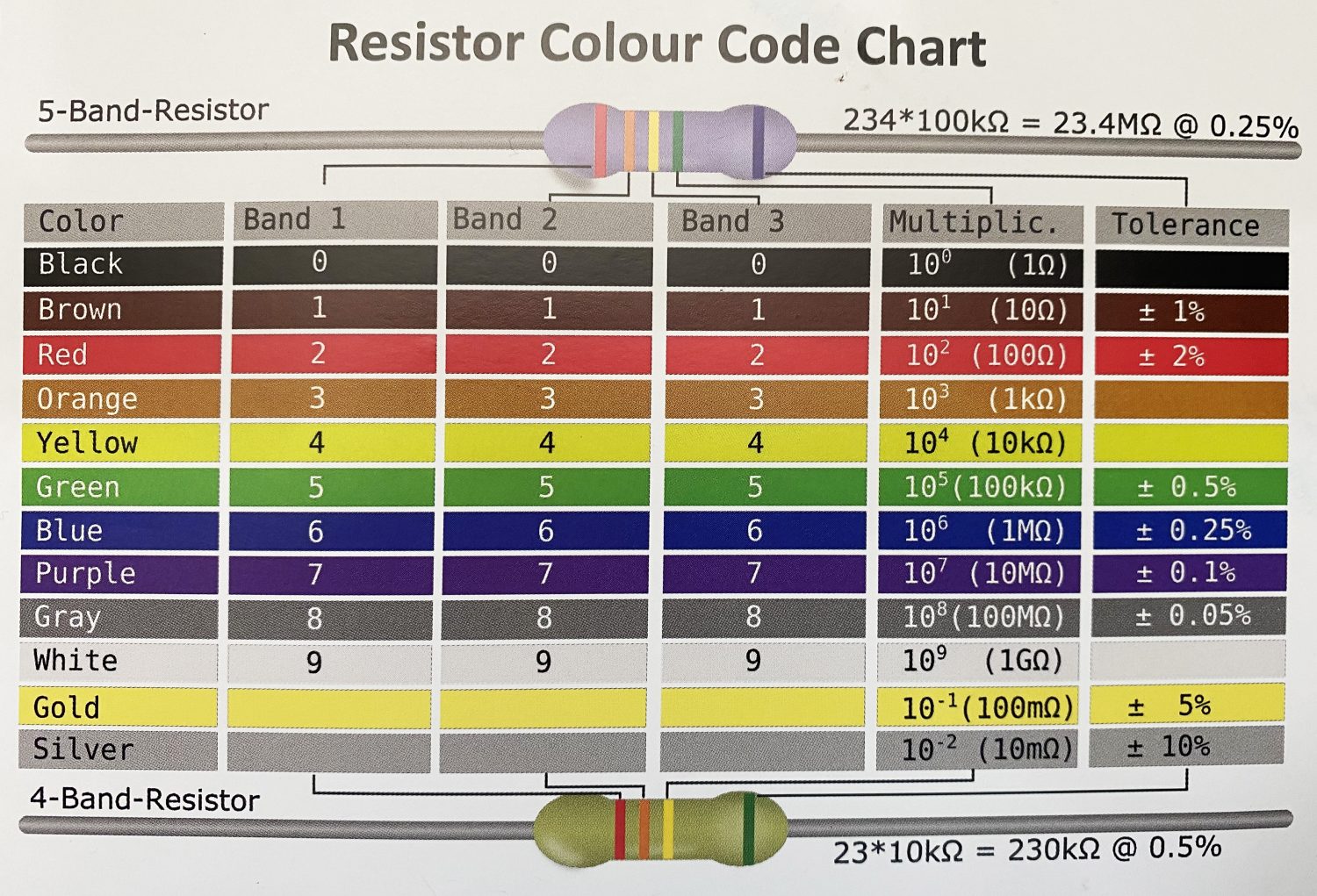Resistor Values
Resistor values are in ohms with symbol Ω. Values indicated as Kohms or KΩ or kiloohms are in thousands of ohms. Values indicated as Mohms or MΩ or megohms are in millions of ohms.
To convert KΩ to MΩ, multiply by .001
Example: 220KΩ = .220MΩ = 220,000Ω
To convert MΩ to KΩ, multiply by 1,000
Example: 3.3MΩ = 3300KΩ = 3,300,000Ω
Unfortunately some pieces of vintage equipment used “M” to indicate thousands of ohms instead of “K” on schematics and parts lists. Typically these would not use or mix “K” and “M”. Best bet is to carefully check before replacing, etc. Since most equipment did not use resistors above 20MΩ, if values are listed above 20MΩ, it may be a good indicator that the “M” reference is actually to KΩ.

Resistor Fundamentals
“Ohm’s Law” governs the application of resistors in a basic circuit. Ohm’s Law is the simple formula:
V = I x R, where
I is current thru the resistor in amperes,
V is the voltage across the resistor in volts,
R is the resistance in ohms (Ω).
Simple re-arrangement of Ohm’s Law, also yields:
I = V/R or R = V/I
The power dissipation of a resistor may be calculated using the formula:
P= V x I, where
P is the power dissipation in watts,
V is the voltage across the resistor in volts,
I is current thru the resistor in amperes.
